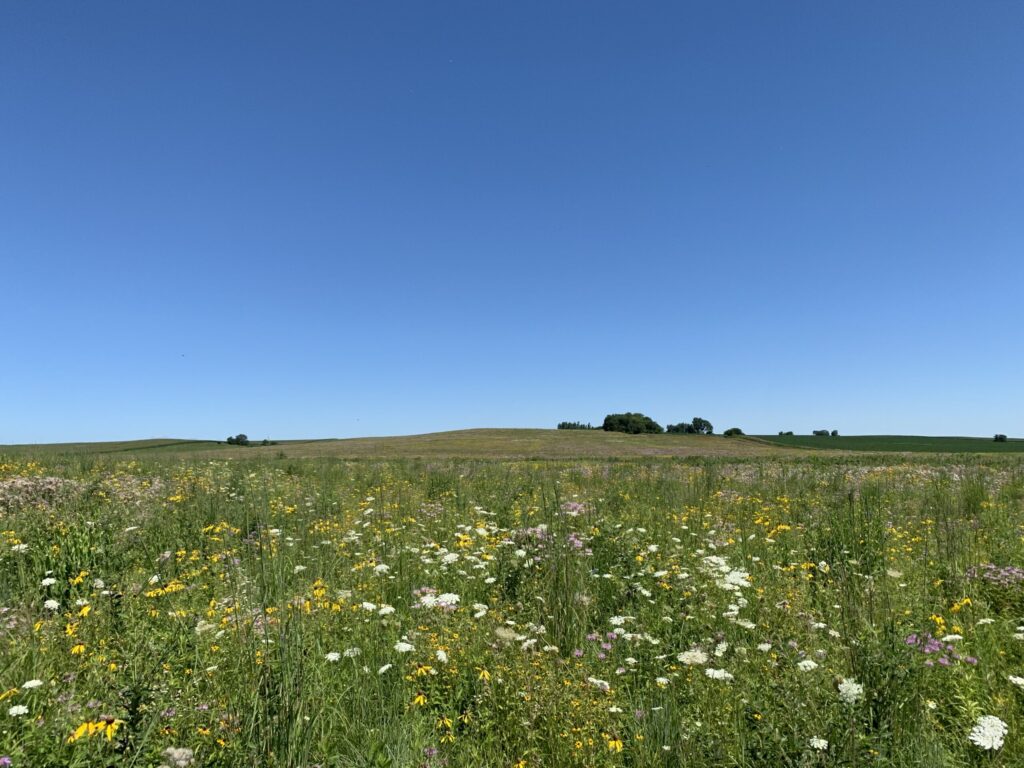A BIRDS-EYE VIEW OF CONSERVATION PRACTICES FROM A FARM MANAGEMENT PERSPECTIVE

Each year farm managers are faced with many decisions that affect not only the financial return but also the health and wellbeing of the land itself. Some of these decisions are proactive while others can be reactive. We try our best to be in front of any foreseeable issues such as adding tile to wet areas, waterways to vulnerable gulley channels, and no-till or minimum tillage to highly erodible ground. There are so many government options available to help offset costs incurred with incorporating conservation practices it can be overwhelming and difficult to navigate from application to implementation. These complexities can be compounded by the endless acronyms, USDA, NRCS, FSA, SWCD, WQI, IDALS, EQIP, CRP, CSP,IFIP, REAP, RCPP, CAP, WRP, AGI and the list goes on, you get the point. A good farm manager will be able to choose the appropriate practices to not only address the resource concern in question but also to match those practices with the landowner’s goals. Let us explore a few of these programs here in Iowa.
Certainly, the big one most people have at least heard about is CRP, Conservation Reserve Program. CRP takes sensitive acres out of production and replaces the crops with grasses and/or trees in exchange for an annual rental rate set at the time of enrollment. There are many different CRP programs that range in size and function. Payments are based off soil type and the “current” market. Some years are better than others from an ROI standpoint. There have been years where we have locked in an excellent payment rate for 10 years and other years it simply does not make financial sense to enroll acres.
The different CRP programs offered range from waterways (CP-8A) to buffers or filter strips along streams (CP-21) to the whole field such as with Pollinator Habitat (CP-42). CRP is broken down into two categories for enrollment, General and Continuous. General is for signing up whole fields or larger chunks of land. General CRP has sign up periods and deadlines for enrollment. A sign up is not guaranteed each year and not all applications are accepted into the program. Continuous CRP is for conservation practices on smaller parts of land, often less than 10 acres. For the most part, you can apply for the continuous CRP program at any time and chances of getting a contract are good.
There are also several other state and federal programs available to offset costs associated with implementing conservation into row crop production. These programs offer technical and financial assistance for practices such as cover crops, no-till, minimum till, strip-till, crop rotation, nutrient management, bioreactors, saturated buffers, drainage water management, prairie strips, and many, many more. From a federal program standpoint, the Environmental Quality Incentives Program (EQIP) is an extremely popular one.
EQIP offers conservation planning and cost share for practices. Cost share can be spread out over multiple years if needed. EQIP typically has batching dates where applications received on or before that date are ranked. The highest-ranking applications get funded, so not all applications are funded. To get into EQIP may take a few tries and in some cases it may never get approved. But never fear, there are other options for the persistent.
One of those other options comes from the state level, the Iowa Financial Incentives Program (IFIP). This program cost shares on many of the aforementioned practices on an annual basis. The payment rates are 50% of the estimated cost, not to exceed $10,000/year. Applications are approved monthly at the SWCD meeting on first come first serve basis until funds are depleted. New allocations come in July each year.
The Water Quality Initiative Program is for management practices like cover crops and No-till. Payment rates are designed to offset most of the practice cost but still leave some skin in the game for the producer. There are caps on the number of acres that can be signed up. WQI is also a limited funding source but instead of ranking against other applicants it is usually a first come, first serve basis each year.
All programs listed above require conservation to be improved on the land and do not pay for practices already implemented. WQI is an exception. There is a reduced payment option for cover crop applications where producers have already used cover crops.
These programs help us to effectively manage the natural resources of a farm while minimizing financial risk. Most of the practices either reduce soil erosion or improve water quality. Soil erosion over time can lead to poor production, extra annual maintenance, stream sedimentation, and phosphorus loading of the stream upon sedimentation. Farm managers are responsible for protecting a landowner’s investment by ensuring soil loss is kept at a minimum. CRP, EQIP, IFIP, and WQI all are tools we use to help us protect the greatest asset our Nation has, the Land. If you are interested in learning even more about how conservation can be implemented on your land please call us today and we would be happy to help you along the way to increased soil health, reduced erosion, and a stronger financial position!